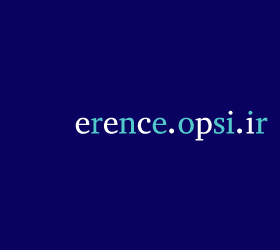Showing 10 results for Yavari
Mr Mohammad Reza Shafiee, Mr Mohammad Hassan Yavari,
year 21, Issue 0 (3-2015)
Abstract
In this paper, the effect of Auger scattering on the performance of semiconductor Quantum Dot Laser (QDL) is modeled. Variety of input and output scattering processes of carriers on the QDL performance is studied. The effect of varying the electrical current density on the Auger scattered carriers is investigated. Also, the scattering effect on the transient response and modulation response of quantum dot laser is analyzed. Results show that Auger relaxation is directly proportional to the electrical current density and also, the modulation bandwidth is destroyed by increasing Auger scattering. Results are in agreement with the experiment.
Gholamreza Babaabasi, Ali Mir, Mohammad-Hasan Yavari,
year 21, Issue 0 (3-2015)
Abstract
In this paper the behavior of InAs/InP quantum dot semiconductor lasers in 1.55µm by considering excited and ground state and effects gain homogeneous broadening and inhomogeneous broadening will be simulate by implementing rate equations. The simulation results indicates increasing in injected current when direct relaxation channel between wetting state and ground state is considered, there is no effect of ground state saturation. In addition, the excited state lasing will appear in 1.42µm. in the following, by examining the number of quantum dot layers, the quantum efficiency will enhance by increase in quantum dot layers but the threshold current will increase too.
Javad Rahimi, Vahid Ahmadi, Mohammad Hasan Yavari,
year 21, Issue 0 (3-2015)
Abstract
In this paper, a passively quantum dot mode-locked laser (QD-MLL) has been analyzed based on the rigorous numerical model. The structure is a Fabry-Perot laser consisting of a reverse-biased saturable absorber and a forward-biased amplifying section. In order to describe the dynamic behavior of the laser, we use traveling wave equations coupled to quantum dot rate equations. Also, we investigate the effect of negative voltage applied to the absorber section on the mode locking performance of the laser. Results show that by increasing the negative voltage applied to the saturable absorber, the output pulse duration is decreased and output power is increased.
Mr Aref Rasoulzadehzali, Prof Kazem Moravvej, Dr Mohammad Hassan Yavari,
year 22, Issue 0 (2-2016)
Abstract
Abstract- To analyze and simulate passive mode-locked semiconductor laser, delay differential equation-based (DDE) model suggests a powerful mathematic basis. By transforming finite difference travelling wave (FDTW) to delay differential based equations (DDE), the model parameters and as a result the complexity of the simulation significantly decrease. So, DDE model provide a very valuable insight which by using it, transient and steady state behavior of the quantum mode-locked lasers can be simulated in different bias conditions. It is shown that by increasing bias voltage, on the one hand pulse width decreases and on the other hand stability of the pulse decreases dramatically. It is also indicated that by increasing the biased voltage, the range of enhancement factor to have a stable pulsation decreases. As a result, by increasing applied voltage in the absorber section of the cavity, as results show the stability of the pulse decreases substantially, although pulse width decreases. Finally, it can be observed that by controlling unsaturated gain and loss ratio (m) one can engineer to have higher repetition rates or harmonic mode locking. It is shown that by increasing the m to definite values, the laser exhibits harmonic mode locking.
Mohammad Hasan Yavari, Mohammad Hasan Rezaei,
year 24, Issue 0 (3-2018)
Abstract
In this research, an all optical fano switch based on photonic crystal slab which has a fano shape transmission spectrum is demonstrated. fano resonance characteristics is improved toward high contrast and sharper spectrum. In proposed device, the quality factor of the active cavity is compared with old structures and the improvement of quality factor is addressed. The structure has been simulated by FDTD. The proposed device because of its so sharp transmission spectrum will be in kind of devices which consume very low energy. Output spectrum of the modified switch is validated by the results reported in the literature.
Hesam Amiri, Sakineh Sedighi Banaei, Mohammad Esmaeil Zibaei, Neda Yavari,
year 25, Issue 0 (ICOP & ICPET 2019 2019)
Abstract
A fiber-optic voltage sensor based on the transverse Pockels effect in the x and z cut LiNbO3 crystals where the optical path was parallel to z and y axis, respectively, is defined and the outstanding temperature stability of within 0℃ to 100℃ is investigated in two directions. The simulated comparison between the temperature sensitivity of the sensor based on the Pockels effect in x-cut LiNbO3 bulk crystal with optical path parallel to z-axis is less than the y propagated, z-cut LiNbO3 crystal where the temperature variation of the transfer function in this temperature range is fractional, linear and in the order of 10-4. However, in the z-cut crystal Pockels cell the output of the sensor is sinusoidal and in the order of 1. Therefore, the use of a fiber-optic voltage sensor based on z propagated, x-cut LiNbO3 crystal demonstrates temperature stability of ±0.01% from 0℃ to 100℃ compared with the y propagated, z-cut bulk LiNbO3 crystal.
Hesam Amiri, Neda Yavari, Mohammad Esmaeil Zibaei, Babak Amini,
year 25, Issue 0 (ICOP & ICPET 2019 2019)
Abstract
In this paper, an efficient method is proposed for the temperature compensation of optical voltage sensors. In this method, the x-cut LiNbO3 bulk crystal with optical path parallel to z-axis with two orthogonal output signals is used. By using the two output signals and the compensation algorithm, the effect of the temperature and laser intensity was eliminated, and the electric field intensity parameter was measured with high accuracy and the mean error reduced by %1.3. This method has been successfully implemented in order to solve the temperature challenge in optical transformer, designed and constructed by the Niroo Research Institute (NRI), were successfully implemented after passing the industrial tests and ensuring their reliability.
Mohammad Heydari, Mohammad Hasan Yavari, Aref Rasoulzadeh Zali,
year 27, Issue 2 (ICOP & ICPET 2021 2021)
Abstract
In this paper, we analyze and present a simulation of a Fano laser with passive nanocavity. First, we introduce governing equations of the laser and by using numerical methods the laser two modes of operation consisting of continuous and pulse output will be examined. By modulation of the nanocavity resonance frequency and refractive index, pulse regime operation and its characteristic will be investigated. Also, the effects of quality factor and Linewidth enhancement on the laser performance are optimized.
M Shekarpour, M H Yavari,
year 27, Issue 2 (ICOP & ICPET 2021 2021)
Abstract
We study the influence of the optical feedback on dynamics, phase noise and timing jitter of hybrid silicon colliding-pulse mode-locked laser using a delay differential equation (DDE) model. The results of dynamic show that the maximum variation of repetition rate is occurred in outside the main resonance regime. We also find a reduction of phase noise and timing jitter compared to without-optical-feedback structure, which is in good agreement with experimental result.
Reza Esmailpour Gildeh , Mohammad Hasan Yavari,
year 27, Issue 2 (ICOP & ICPET 2021 2021)
Abstract
In this paper, new equations are developed for modelling detuning frequency and direct modulation frequency response of semiconductor ring laser under optical injection locking based on rate equations. Amplitude and phase of clockwise and counter clockwise electrical field in semiconductor ring laser are investigated. By using model equations, results show that by increasing the injection power, the locking region and bandwidth of direct modulation laser are enhanced. Also, by increasing detuning frequency in constant injection ratio, bandwidth is decreased.






